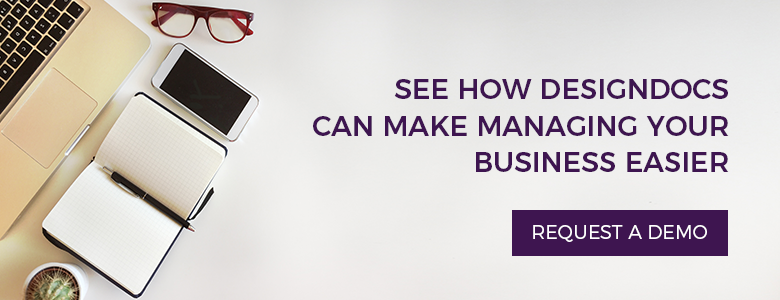Projects, clients, vendors, workrooms, staff – there are a lot of moving parts when it comes to running an interior design business.
Regardless of the size, making sure you’re using interior design project management software which has been built specifically for your industry can go a long way in helping your business run efficiently and achieve success.
But navigating the array of potential software options out there can be a daunting task – which one is the right one for your interior design business?
Here are our 5 tips on how to choose the best interior design project management software.
1. Take some time to plan
Before you start your search, it’s worth taking some time to consider your design business’s current needs, as well as your long-term goals. Take some time to plan and think about:
- What challenges do you currently face in your business?
- What might be causing you and your team stress?
- What are your business goals?
Are you looking to run a more profitable business in the future or perhaps expand your team? Assessing your short and long-term goals will help guide your search, as each system has its own unique set of features and strengths.
2. Integrated accounting
Accounting is an unavoidable aspect of running an interior design business, so why not make it easier? The benefits of choosing interior design project management software that comes with an integrated accounting system are many including:
- It streamlines your business processes as you manage all your projects and finances in one place.
- It eliminates the chance of human error as your bookkeeping is automatically done as your project work is done.
- You can easily generate accurate financial reporting regarding your business’ profitability, giving you greater insight and helping you to reach your short and long-term financial goals quicker.
Plus, if the interior design project management software you choose provides a complete accounting package, then there is no need to integrate with other systems. This will mean less maintenance and fewer costs for you down the line.
3. Customer support
Learning new software can be a bit daunting, especially if it might be the first time you’ve implemented a system in your business. Whether you’re a seasoned pro or it’s the first time you’ve used a software system, it is still important to inquire about the level of customer support you can expect. Make sure you investigate:
- What type of support is provided for you and your team?
- What are the expected response times between questions and resolutions?
- What kind of always-accessible online help is available?
Also, don’t be shy about requesting a demo of the software once you get down to a short-list of potential options. Ultimately, when starting a new system you’ll want to get up to speed as quickly as possible and having the right support available will help you get there.
4. Talk to friends and colleagues in the industry
While doing your research, you could also ask friends or industry colleagues what systems they use and how they feel it has benefited their business. If you are new to the industry, another option might be to review client testimonials of the software you are interested in on the company’s website. This will help you get an idea as to what could work for you too.
5. Know your budget
Having a realistic budget in mind before you start your search is always important. Some interior designing software systems price their subscriptions differently, usually on a per-user or per-project basis. So, while reviewing various systems keep your budget in mind, and stick to it.



